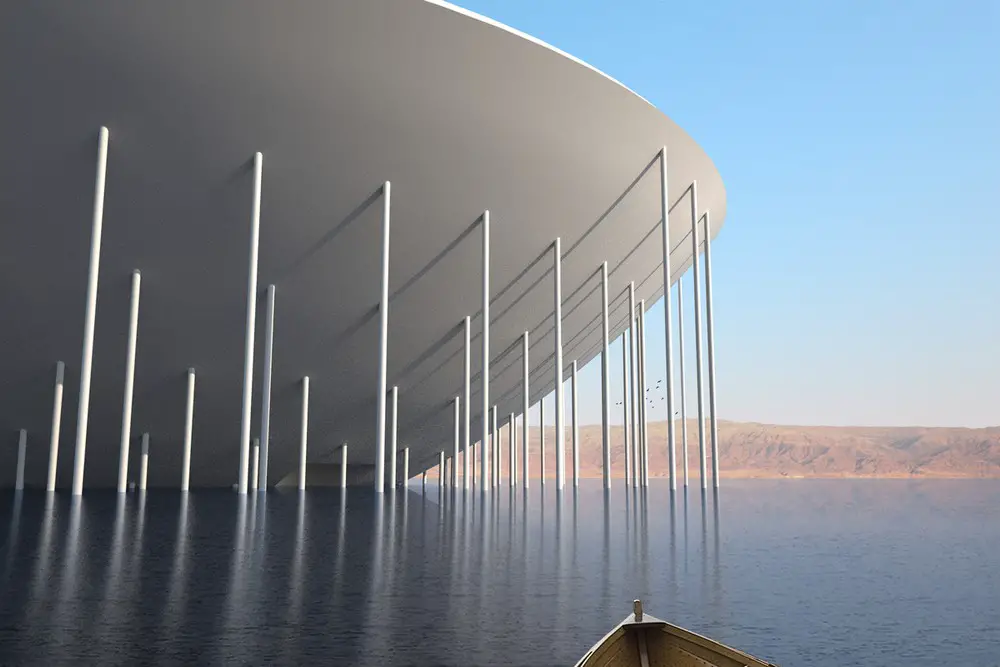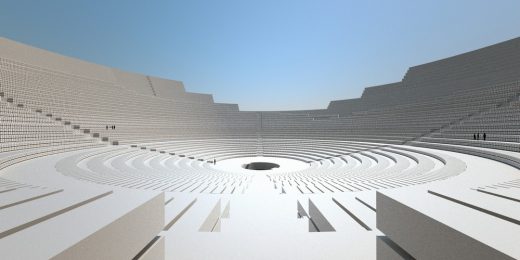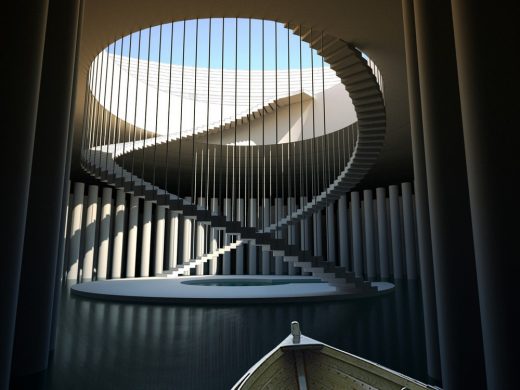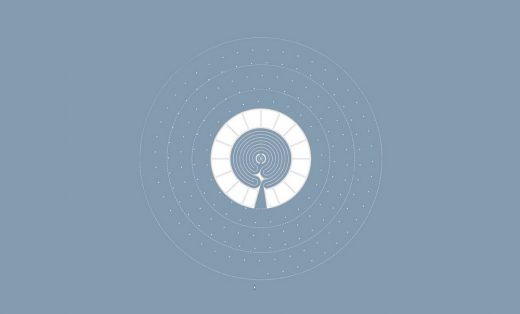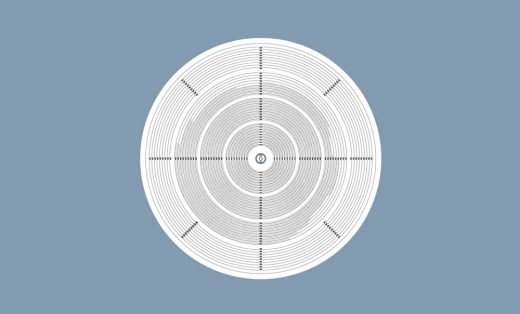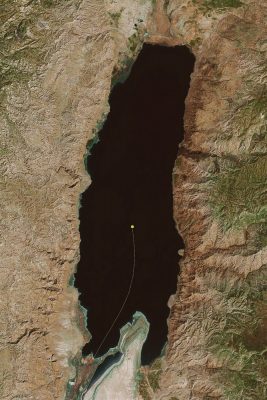Yarauvi Floating Necropolis, Jordan Concept Burial Ground Images, Architect, Design Concept Project
Yarauvi Floating Necropolis, The Dead Sea
16 June 2020
Design: Miró Rivera Architects
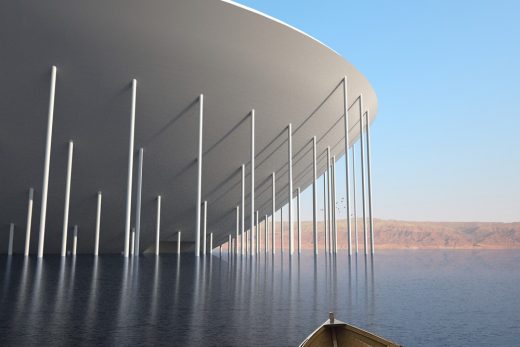
images courtesy of architects practice
Yarauvi Floating Necropolis
Death and humans’ response to it have long held the power to bind cultures together and create places that transcend time and custom. Our collective respect for the dead and where they are laid to rest reaches across cultures like few other human experiences. It is the commonality of this reverence that guides the creation of Yarauvi, a necropolis at the center of the Dead Sea.
Yarauvi is a place where any person—regardless of nationality, race, religion, age or affluence—can be laid to rest. By choosing this site as a final resting place, any citizen of the world can contribute to a growing monument to tolerance, reconciliation, and unity.
Families will bid farewell to their loved ones from a dock at the southern banks of the Dead Sea. From there, the dead, accompanied by a few mourners, will be transported to Yarauvi by boat. The boat enters the necropolis at its base and travels through a ceremonial unicursal labyrinth that leads to the center point of the necropolis, where the dead are lifted to the space above.
The accompanying mourners will also enter the necropolis this one time, during the interment of their loved ones. The necropolis is a parabolic structure of concentric rings supported on a raft-like armature below the water line, which allows it to float in the buoyant salty waters of the Dead Sea. Inside, the necropolis is a bowl-shaped space open to the sky. Individual sarcophagi will progressively fill the stepped structure, laid out in a concentric configuration facing one another.
The Dead Sea Burial Ground design by Juan Miró
Yarauvi was conceived by Juan Miró during his graduate studies with professor Michael Sorkin at Yale (Sorkin passed away from COVID in March), and has been further developed during Juan’s professional practice at Miró Rivera Architects in Austin, Texas. The project is the result of several lines of investigation: The complex and powerful relationship between Nature and the manmade throughout history, the circle as a universal building typology, and Death as the most common human experience. It is also a manifesto advocating for a renewed idealism—an idealism understood as the quality of believing that ideals should be pursued.
Yarauvi is relevant right now
As the world grapples with the staggering death toll of COVID-19, Yarauvi is a timely reminder that death is a part of humanity that architecture should embrace rather than avoid. At the same time, the message of tolerance and reconciliation that Yarauvi represents is critical as the world seeks to take action in the face of widespread, systemic injustice and inequality. There are few things more universal than death; it affects every human being on earth regardless of race, creed, gender, identity, or status.
Tolerance and reconciliation
Problems and issues Yarauvi address
Yarauvi addresses the need to create new avenues to promote tolerance and reconciliation. Yarauvi offers the opportunity for conscientious world citizens to have their voices heard and counted as they individually contribute to a collective statement against intolerance and divisiveness.
This intolerance is most often caused by a hyper focus on our cultural and geographic differences. Yarauvi reminds us instead of our commonalities by providing a common resting place for all cultures with a unifying narrative.
Not only does Yarauvi offer individuals the ability to voice their support for these ideals, but it offers a physical manifestation of those voices. As those voices grow in number, the monument grows in size giving testament to the world of our society’s increasing commitment to the principles of tolerance and reconciliation.
Middle East Society Benefit
People who would benefit from a concept like this
Yarauvi would become a growing symbol of society’s commitment to tolerance and reconciliation.
Individuals would benefit from the capacity that Yarauvi would have to give a voice to their commitment to reconciliation and tolerance. In a world where there is a growing dissatisfaction that the beliefs of one common person are not measurable or effective, Yarauvi offers the opportunity for that voice to be added to others in a physical and unforgettable way.
Society also benefits from this collection of like-minded citizens making the statement that it is time to break with our habit of letting our differences define us. Instead these individuals collectively point a way forward towards a world defined by tolerance and reconciliation.
By following the example of the dead, the living can enjoy a world that is less fearful, less hostile, and more united.
There is no client and there is no expectation that the project will ever be built. Yarauvi is simply a result of exploring the concept of how architecture might embody ideas about death, tolerance, and reconciliation.
Design: Miró Rivera Architects
Images: Miró Rivera Architects
Yarauvi Floating Necropolis in The Dead Sea, Jordan images / information received 160620 from Miró Rivera Architects
Jordan River Peace Park Partners
Yale School of Architecture, USA
Bezalel Academy of Arts and Design, Jerusalem
Israeli-Jordanian Jordan River Peace Park
Urban Design Workshop (YUDW)
Location: Old Gesher, Israel / Jordan, Middle East, Weastern Asia
Jordan Architecture Designs
Contemporary Jordan Architectural Selection
Jordanian Architecture Design – chronological list
New Jordan Buildings
Queen Alia International Airport, Amman
Design: Foster + Partners
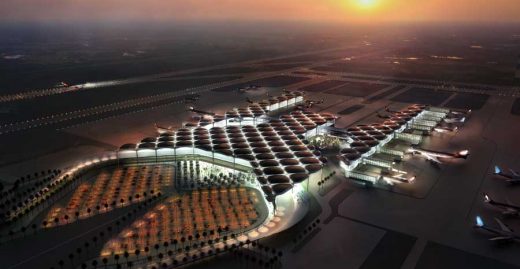
picture © Foster + Partners
Queen Alia International Airport
‘Living Wall’ project, Amman, northern Jordan
Design: Foster + Partners
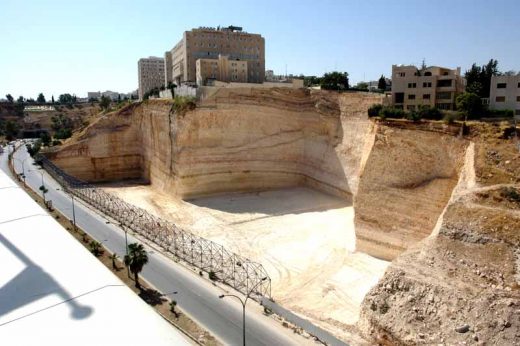
picture © Foster + Partners
Amman Building
Petra Visitors’ Centre, Arabah, Ma’an Governorate, southern Jordan
Design: Edward Cullinan Architects
Jordanian Building at Petra
Comments / photos for the Yarauvi Floating Necropolis in The Dead Sea, Jordan design by Miró Rivera Architects page welcome.

